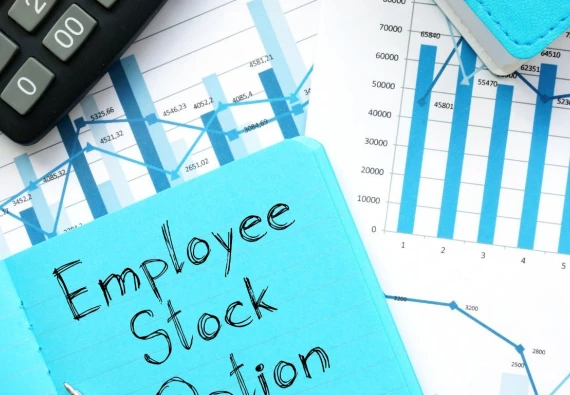Most startups fail. The ones that don’t usually find success through selling the company. While a high value acquisition is usually cause for celebration for founders and other employees with equity, it can quickly turn bittersweet or just plain sour for employees with unvested equity.
Startup equity is almost always subjected to vesting. Subjecting stock or stock options to vesting is meant to align the incentives of employees with the startup. If the employee sticks around for a period of time and helps the company grow, then the employee gets the chance to share in the financial success of the company if there’s a liquidity event.
Related: What Type of Equity To Give Startup Employees
But what happens when the startup is sold (i.e., there is a “change of control”) before the employee’s equity is fully vested? The answer will depend on what the employee’s equity award documents say and what the startup’s equity incentive plan provides. But this post covers a few of the more common scenarios to expect.
Accelerated Vesting
Startups may provide for some kind of accelerated vesting of unvested shares if the company is sold, at least for certain key personnel (e.g., founders, executive, or other key hires). Generally speaking, there are two approaches to accelerated vesting: single-trigger acceleration and double-trigger acceleration.
Single-Trigger Acceleration
An equity holder with single-trigger acceleration will have some or all of their unvested equity accelerate and vest if the company is sold. The single trigger is the sale of the company.
This is not the norm. In fact, most investors will not go along with single-trigger acceleration even for founders or key executive, absent unusual circumstances (one more common exception is with equity grants to advisors). The reason is that a fully vested founder or executive may have very little financial incentive to stay on following the acquisition and help continue to grow the company. This risk of key personnel leaving right after the acquisition is done will, in most cases, make the startup less attractive to potential buyers. Of course, the acquiring company could offer new financial incentives to key personnel, but this effectively makes the startup more expensive (and thus again less attractive) to acquire.
Related: Equity Grants to Startup Advisors
If you’re a startup founder with single-trigger acceleration, you’d better be ready to give a thorough defense to potential investors why you should have this right. More realistically, you should be ready to give it up when asked by potential investors whose money you want.
Double-Trigger Acceleration
With single-trigger acceleration off the table in most cases, the alternative—and much more common approach—to take with founders and key personnel is double-trigger acceleration. As the name suggests, with double-trigger acceleration, there are two events that need to occur for unvested equity to accelerate and vest.
The first trigger, as with single-trigger acceleration, is a change of control (i.e., a sale of the company). The second trigger is for the employee to be fired without cause within a certain period of time (e.g., 12 months) after the change of control. In addition to being fired without cause, the second trigger may include resigning for good reason though this is not always included.
Needless to say, double-trigger acceleration addresses the concerns of investors and future acquirers present with single-trigger acceleration. But it also provides protections for the employee with unvested equity, particularly in situations where the startup is fabulously successful and its equity is highly valuable.
In such situations, if an employee did not have double-trigger acceleration, the acquiring company might actually have an incentive to terminate the employee to ensure no further equity vested. In other words, if the value of the unvested equity exceeded the costs of replacing the employee, an acquiring company would have reason to can the employee and hire a replacement. Double-trigger acceleration forecloses this possibility.
A Trap For The Unwary
So far, we’ve assumed that unvested shares will survive any change of control. But this is not always the case.
Some equity incentive plans will actually have provisions that permit a startup to cancel unvested shares in connection with an acquisition, rather than allowing them to continue on and be assumed by the acquiring company. From the startup’s standpoint, it makes sense to retain this flexibility in order to close a sale if the acquiring company doesn’t want to assume unvested equity. It may also make sense from the founder’s perspective, as their vesting schedule will likely be in the four year range and it’s not uncommon for a successful startup (depending on the industry and other factors) to exit at the four or five year mark.
But for employees who join the company one or two years in, this outcome may be unacceptable. It’s absolutely critical for prospective employees who are offered equity compensation to run down whether the startup’s equity incentive plan gives the company this right.
Related: Startup Equity Is Not A Substitute For Minimum Wages
Takeaways
Helping grow a startup can be deeply rewarding, but it often comes at the expense of a market salary and free time. Equity can compensate for these opportunity costs, but only if employees secure rights in their equity. Double-trigger acceleration is often most effective in striking a balance between the interests of startups/investors/acquirers and employees of the startup. But a startup could reserve the right to cancel unvested shares in the event of a change of control, which could make the protections of a double-trigger acceleration illusory. Caution and due diligence should be the approach for everyone involved here, including founders, investors, employees, and acquiring companies.






